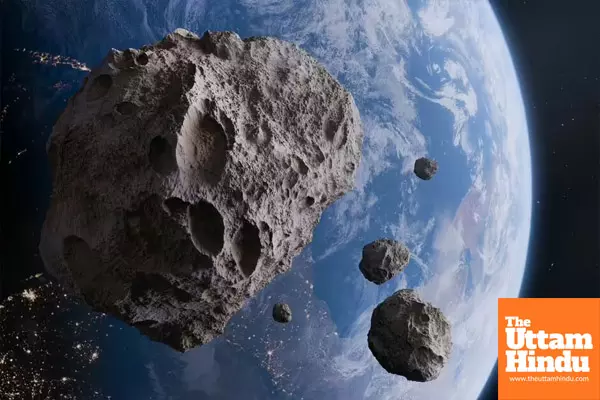
Asteroid alert: scientists warn of increased risk of 2032 impact

New Delhi (The Uttam Hindu): NASA’s Centre for Near-Earth Object Studies (CNEOS) has calculated a 2.3% chance—roughly a 1-in-43 probability—that asteroid 2024 YR4 could impact Earth in 2032. While this number may sound alarming astronomers emphasize that further observations will likely refine the asteroid’s trajectory and reduce any potential risk. Just a week ago, the European Space Agency (ESA) estimated a lower probability—1.3%—of impact on December 22, 2032 the date when 2024 YR4 will make its closest approach to Earth. This still means that statistically the asteroid has a 98–99% chance of passing Earth harmlessly. The asteroid was first detected by NASA-funded skywatchers in Chile just before the new year and is estimated to measure up to 300 feet (90 meters) in diameter. This makes it similar in size to the object that caused the 1908 Tunguska event, where an explosion over a remote region of Siberia flattened 830 square miles (2,150 square km) of forest. However, such events are extremely rare and even an impact of this scale would likely cause regional rather than global devastation.
Despite its high placement on official asteroid risk lists in the US and Europe, 2024 YR4 has only been assigned a 3 on the Torino Impact Hazard Scale. This scale ranks asteroid threats from 0 (no risk) to 10 (catastrophic global event) and a rating of 3 indicates a “close encounter” that merits continued observation but is not yet considered a severe threat.
ESA’s experts explain that as more precise tracking data is gathered, the likelihood of impact usually decreases. A video released by the agency, How Asteroids Go from Threat to No Sweat illustrates how new calculations often shift asteroids from potential hazards to negligible risks. NASA’s Planetary Defense Coordination Office shares this sentiment, noting that past objects initially listed as high-risk were later ruled out as more data became available. Molly Wasser, a researcher at NASA, added that further observations in the coming months will likely refine 2024 YR4’s trajectory, further lowering its threat level. Professor Colin Snodgrass, a planetary astronomy expert at the University of Edinburgh reassured the public, stating that it is most likely that this asteroid will pass by harmlessly. "It just deserves a little more attention with telescopes until we can confirm that," he said. Historically asteroids with initially concerning predictions have been reclassified as non-threats. One example is 99942 Apophis, a 1,100-foot asteroid initially given a rating of 4 on the Torino Scale after its 2004 discovery with predictions suggesting possible impacts in 2029 or 2036. However, after years of tracking, scientists ruled out any risk of collision for at least the next century.
Even if asteroid 2024 YR4 remains a high-risk object, planetary defense experts remain optimistic. NASA’s 2022 Double Asteroid Redirection Test (DART) mission successfully altered the trajectory of the asteroid Dimorphos, proving that humanity has the technology to redirect asteroids. "This asteroid is of the scale that a mission like DART could be effective if required so we have the technology and it has been tested," Professor Snodgrass affirmed. For now, astronomers will continue tracking asteroid 2024 YR4, collecting more data and refining their calculations. Public updates are expected in the coming months, likely reducing the asteroid’s already small chance of impact even further. Just like how early predictions can sometimes cause unnecessary panic the tale of 99942 Apophis teaches us that continuous tracking and research often reveal that these asteroid threats are much less dangerous than initially thought.

